Craig Platt visits "the most wonderful sight in Africa", Victoria Falls. The reporter travelled as a guest of South African Airways and Sun International.
There's a big sign on the front of Thandi Lukata's café, one in a short line of huts offering snacks, soft-drinks and souvenirs to visitors to the famously thundering Victoria Falls nearby.
"Please come in," it reads. "Door closed due to problem BABOONS."
To underscore the message, there's a photograph of one of the big monkeys sorting through the contents of a wheelie-bin he has overturned. Just think how much damage he could cause in a cafe.
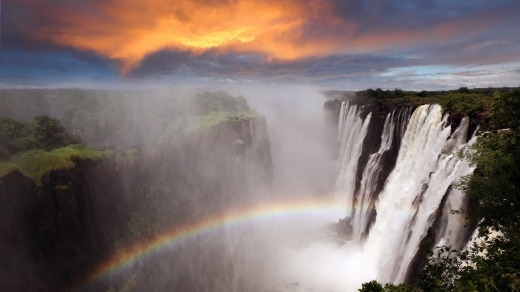
As ravenous as a baboon after a morning spent walking up and down the banks of the Zambezi River and out along the bridges that overlook the falls, I push the door open.
The cafe is in darkness. It still looks closed ... until Thandi emerges from the gloom.
"Hello. We are open. It's just we don't have any power," she explains, waving a crumpled piece of paper listing the roster of daily "power outages".
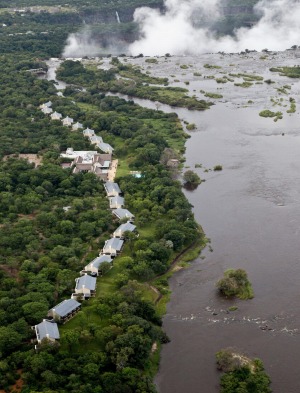
For the next few hours, there'll be no vegie burgers, no ice-creams, next to no anything, she explains. Unless, of course, I fancy a salad roll, tomato, lettuce, anything else she can find?
She knocks up a delicious sandwich and then sends me next door to another cafe, where a friend provides an iceblock – half-price, because it has half-melted since his fridge cut out two hours earlier.
The total bill comes to just 80 Australian cents. Thandi politely rejects a tip.
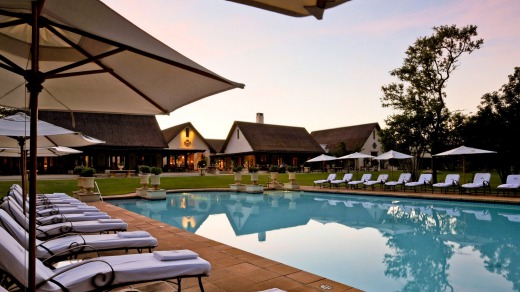
Welcome to Zambia, a land of cheerful, albeit impoverished, people; a place of amazing adventures, magnificent landscapes and truly unforgettable experiences.
My all-too-brief visit to Zambia – part of a 10-day expedition that includes other destinations in South Africa and Botswana, "tailor-made" by Bill Peach Journeys – began on the Zambezi River crossing at Kazungula.
Though close to a single point where the borders of South Africa, Botswana, Zambia and Zimbabwe meet, and to the site of a long-awaited bridge across the mighty Zambezi, it is a chaotic place. Full of queues.
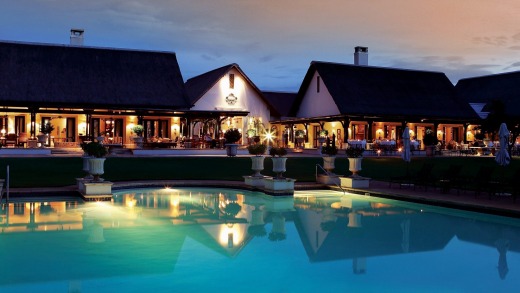
Large trucks going in and out of Zambia queue for days, weeks, even months to take the commercial-vehicle ferry.
Locals queue to tap tourists. Tourists ferried across in their fast, flat-bottomed boats queue, sometimes for hours, to show their papers and pay the minimum $70 entry fee.
And once out on the open road, police seem to queue to stop and check vehicles and their contents, and inspect passengers' documents. Two or three times on the 75-kilometre drive to Livingstone, drivers can expect to be pulled over by the police for "checks".
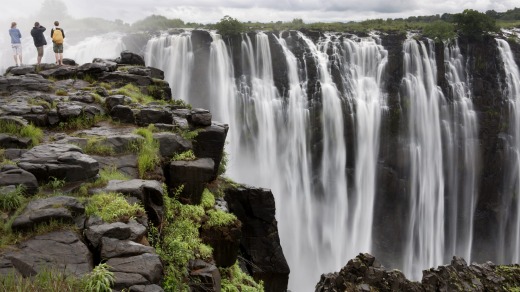
What precisely are they checking? "That our vehicles are totally roadworthy," my driver, Kennedy, explains with a broad smile, as he points out schools, factories and other facilities, provided by Zambia's new best friends, the Chinese.
It takes almost 1½ hours to reach our destination, the Royal Livingstone Hotel. But it's worth the wait.
Our arrival has felicitously coincided with a visit by singers from a local church. They wear bright smocks, decorated with zebras and giraffes, and dazzling smiles.
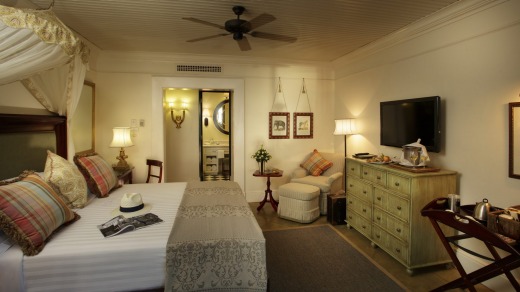
What a welcome! The smiles continue inside, where the desk staff quickly check guests in, while their luggage is taken round to luxurious rooms, fitted with world TV, Wi-Fi and other trappings required by most world travellers.
Ranged in several, two-storey rows either side of a 25-metre pool, bars and dining areas, the rooms run parallel to the Zambezi River, which races towards the falls just a metre from the foot of the hotel's lush, well-watered lawns.
Indeed, the walk from the hotel to the falls, whose famous, swirling clouds of mist are visible from the sky up to 50 kilometres away, takes only 15 minutes or so. Repeat entry is free to hotel guests.
But wait, before leaving for the falls, there is another surprise for the newcomer.
In the hotel grounds, often next to the rooms, there are impalas, bushbucks, zebras, baboons (inevitably), giraffes (occasionally), elephants (quite often) as well as vervet monkeys.
Much smaller, more polite, more athletic than the baboons, the male vervet, especially, is easily spotted. Putting it politely, he's the one with the red penis and bright blue testicles.
The hotel grounds are also teeming with birds, including weavers of various varieties, black-collared barbets, red-wing starlings and raucous, tree-crashing trumpeter hornbills.
Look out, too, perhaps, for Nyaminyami, an ancient river-god with the body of a snake and the head of a fish.
According to one of several bookmarks supplied by the hotel, this mythical creature is protected by the Tonga people of the Zambezi Valley, who believed he brought good rains, peace and prosperity.
"We are still waiting," explains my "personal room butler", with another trademark Zambian smile.
He is not surprised to learn that two-thirds of his country's population lives on less than $1.50 a day.
It is a sobering thought, especially perhaps for hotel guests dining, playing, sitting, walking and holidaying in such luxury. It is some consolation to know that at least our eco-friendly activities are pumping revenue into the local economy.
But I must drag myself away from the "dazzle" of zebras, now gathering at my back door, to meet a special "falls guide" for what promises to be a very wet and wonderful walk into "Mosi-oa-Tunya", the smoke that thunders.
Another helpful hotel bookmark explains that the falls are listed among the "Seven Natural Wonders of the World", a list, according to the bookmark, headed by the Great Barrier Reef.
Of course, there are several ways to visit and enjoy the famous falls, a deafening curtain of water 1.7 kilometres wide and 108 metres high, travelling at about a million litres per second. Through the wet season, that is.
They range from the crazy/courageous, such as bungy jumping and abseiling, through the vaguely intrusive, such as helicopters, small planes, microlights, jetboats and steam trains, to the more active.
These include via canoe, kayaks and – through the adjacent reserves – quad bikes and horses, and, of course, walking. Each provides an opportunity – in the words of the local tourist slogan – to "lose yourself in the wonder of nature".
Simply getting up close and wet to the falls – or as close as possible – is an exhilarating experience, best tackled in a purpose-made poncho. And non-slip, inexpensive footwear.
Having been almost washed away on the giddying, exposed "Knife Edge Bridge", here are a few things I would not recommend: Jumping into the next worse thing to a plastic bag. Carrying an expensive camera. Wearing a smart, sports shirt, long trousers, walking shoes and socks. All got wet, wet, wet. But, hey, wow! Wow! Wow!
Almost as exciting, and far more waterproofed, are the walks alongside the Zambezi River, which offer great views, a quota of naughty baboons and the amazing story of the first Westerner to "discover" the falls.
David Livingstone, who was born in Scotland in 1813, was an unusual combination of pioneer, explorer and missionary in Africa. In 1855, he was guided by locals to the falls, which he named in honour of Queen Victoria.
Three years later, he returned to Africa intent on opening up the Zambezi to "Christianity, commerce and civilisation" – words inscribed on the base of a his statue overlooking the falls. He soon discovered that the river was not navigable along its full length.
Subsequently lost, and found again by the intrepid journalist Henry Morton Stanley with the immortal words, "Dr Livingstone, I presume", the explorer died on another excursion in 1873 from malaria.
His heart was buried locally, but his remains were carried by admirers for thousands of kilometres before being exported back to London, where they were buried in Westminster Abbey.
Such is the esteem in which he was held that, while other colonial settlements have been renamed, the town of Livingstone remains. "He was a great, great man," our guide says solemnly.
Of the falls, and of the river as it speeds towards them, Livingstone wrote, "Scenes so lovely must have been gazed upon by angels in their flight".
And, what better way to celebrate and say goodbye to such memorable scenes than by a sundowner river cruise, on boats such as the African Queen?
The mood on board is boisterous. At the halfway point, a voice comes over the loudspeaker reminding guests that refreshments are free and that "the more you drink, the more animals you will see".
But when the red sun finally disappears in a blaze of glory, the mood changes, the voices quieten. All is awe and wonder.
www.billpeachjourneys.com.au
Qantas has flights from Sydney to Johannesburg. From there, South African Airways has connections to Livingstone.
The Royal Livingstone experience is part of a collection of tours Bill Peach Journeys has created for independent travellers. The 12-day tour has daily departures through 2015-16, priced from $12,309 per person, twin-share. In 2016, there will also be a group departure. Quoted prices do not include airfares to and from Johannesburg.